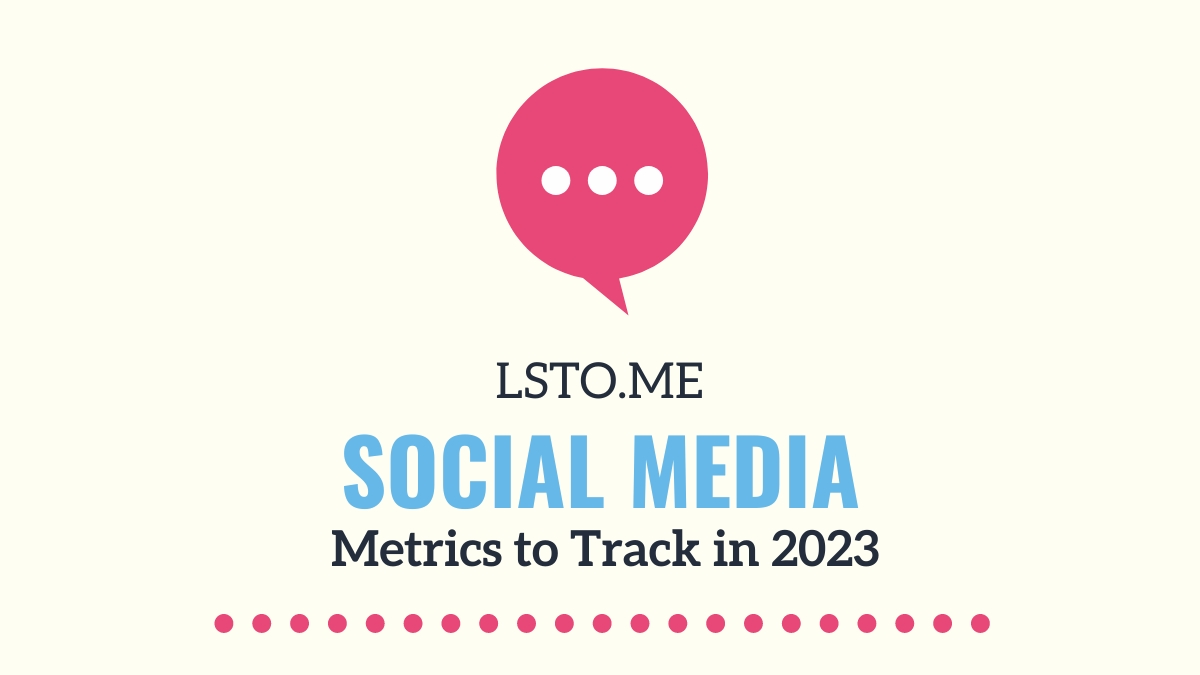
Social media has become an essential part of the marketing mix for businesses and individuals alike. However, as the number of social media platforms and users continues to grow, it can be challenging to keep track of which metrics matter and how to measure them effectively.
To help you stay on top of your social media game, we’ve put together a list of the top social media metrics to track in 2023. These metrics will give you valuable insights into your social media performance and help you make data-driven decisions to improve your strategy.
Social media has become an essential part of the marketing mix for businesses and individuals alike. However, as the number of social media platforms and users continues to grow, it can be challenging to keep track of which metrics matter and how to measure them effectively.
To help you stay on top of your social media game, we’ve put together a list of the top social media metrics to track in 2023. These metrics will give you valuable insights into your social media performance and help you make data-driven decisions to improve your strategy.
1. Engagement Rates
Engagement rates are one of the most critical metrics for measuring the effectiveness of your social media strategy. Engagement includes likes, comments, shares, and any other interaction your audience has with your content. By measuring your engagement rate, you can determine how well your content is resonating with your audience and make adjustments to your strategy as needed.
To calculate your engagement rate, divide the number of engagements (likes, comments, shares, etc.) by the total number of followers and multiply by 100. For example, if you have 1,000 followers and 100 engagements on a post, your engagement rate would be 10%.
2. Follower Growth
Follower growth is another crucial metric to track. Your follower count reflects your overall social media reach and the size of your audience. The more followers you have, the more people you can potentially reach with your content.
To track your follower growth, monitor your follower count regularly and calculate your net follower gain or loss over a specific period. You can then use this information to adjust your social media strategy and make changes to attract more followers.
3. Click-Through Rates
Click-through rates (CTR) measure how often people click on links in your posts or ads. This metric is particularly important for businesses that want to drive traffic to their website or online store. By tracking your CTR, you can determine which posts and ads are most effective at driving clicks and optimize your content accordingly.
To calculate your CTR, divide the number of clicks by the number of impressions (the number of times your post or ad was shown) and multiply by 100. For example, if your post received 1,000 impressions and 100 clicks, your CTR would be 10%.
4. Impressions and Reach
Impressions and reach are two related but distinct metrics. Impressions measure the number of times your post or ad was displayed, while reach measures the number of unique users who saw your content. Both metrics are essential for measuring the overall impact of your social media strategy.
To track your impressions and reach, review the analytics provided by each social media platform you use. By monitoring your impressions and reach, you can see which types of content are most effective at reaching your target audience and adjust your strategy accordingly.
5. Conversions
Finally, conversions are one of the most critical metrics for businesses that use social media for e-commerce. A conversion occurs when a user takes a specific action, such as making a purchase or signing up for a newsletter. By tracking your conversions, you can measure the direct impact of your social media strategy on your business’s bottom line.
To track your conversions, set up conversion tracking within the social media platform you use. You can then monitor the number of conversions over a specific period and use this information to optimize your strategy for maximum impact.
Here are some additional tips and best practices for tracking social media metrics in 2023:
6. Set clear goals and objectives for your social media strategy.
Before you start tracking metrics, it’s essential to have a clear understanding of what you want to achieve with your social media presence. Whether it’s increasing brand awareness, driving traffic to your website, or generating leads, having specific goals will help you determine which metrics are most relevant for your business.
7. Use social media analytics tools to make tracking metrics easier.
Many social media platforms provide built-in analytics tools that can help you track metrics and gain insights into your performance. Additionally, there are third-party analytics tools available that can provide more detailed and comprehensive data.
8. Keep track of your competitors’ social media performance.
Monitoring your competitors’ social media activity can give you valuable insights into what’s working (and what’s not) in your industry. By analyzing their metrics, you can identify areas where you can improve and stay ahead of the competition.
9. Regularly review and adjust your social media strategy based on your metrics.
Tracking metrics are only useful if you use the insights you gain to make changes to your social media strategy. Regularly reviewing your metrics and adjusting your strategy based on the data will help you stay on track and achieve your social media goals.
10. Continuously test and optimize your content.
Finally, it’s essential to regularly test and optimize your social media content to maximize engagement and conversions. By experimenting with different types of content, posting schedules, and calls to action, you can determine what resonates best with your audience and improve your overall social media performance.
In summary, tracking social media metrics in 2023 is critical for measuring the impact of your social media strategy and making data-driven decisions to improve your performance. By setting clear goals, using analytics tools, monitoring your competitors, regularly reviewing and adjusting your strategy, and continuously testing and optimizing your content, you can stay ahead of the curve and achieve success on social media.




